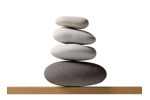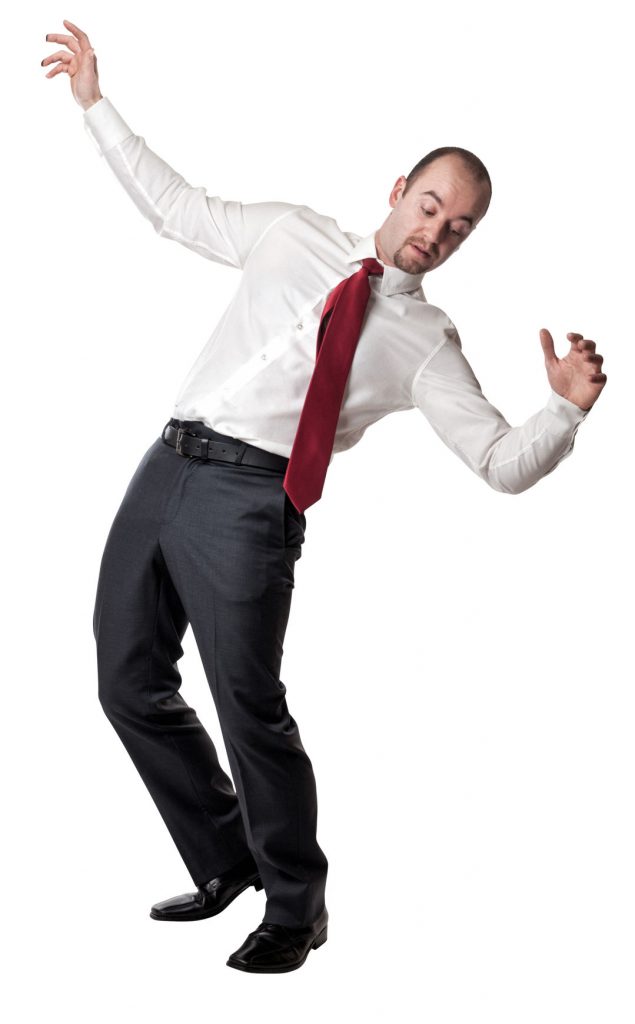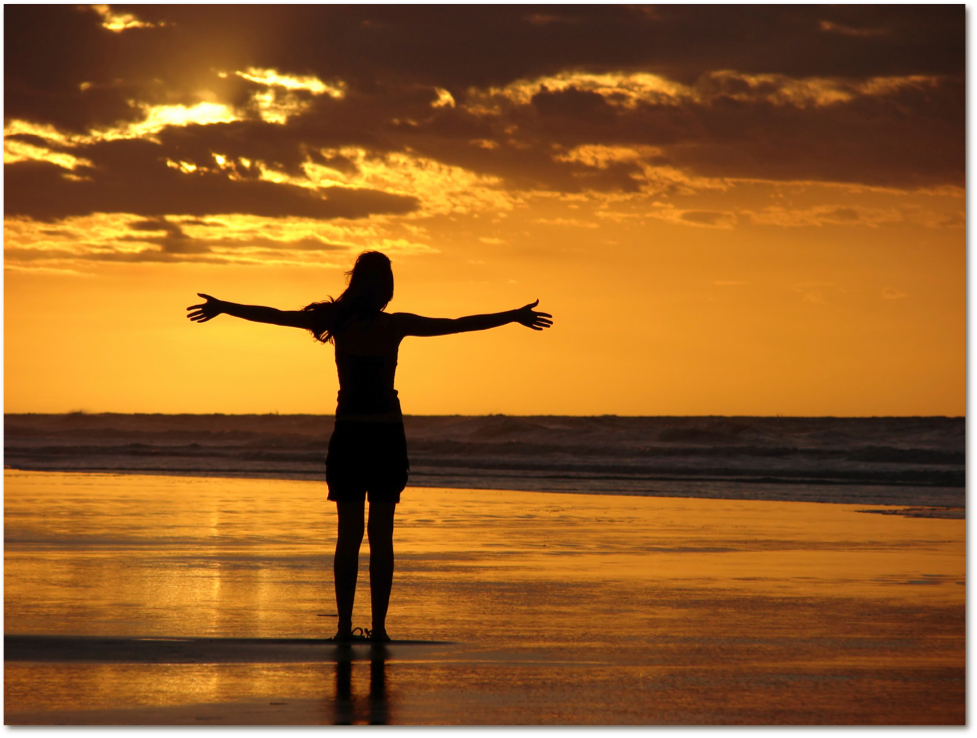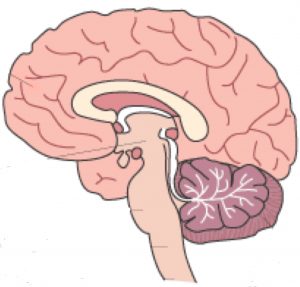Minding Your Balance

6-Week Class Notes - Week 5
Stability Recovery

Balance falters when our center of mass moves outside the boundaries of our base of support. Stability recovery includes, on the one hand, physical strategies that literally get our feet back under us, i.e, taking a step in the direction of the fall be it front, back, or a grape-vine step to the side. At the same time, mind/body strategies enhance and lead the postural adjustments needed to reestablish stable balance. Potential mind/body strategies include:
- Weight Underside: We tend to react in a fall by tensing up, which can increase instability and decrease agility. Feel the release/drop of "upper side" tension down through your center and into the ground.
- Look to the Horizon: Visual focus exerts a powerful lead on our body's movement. Looking down when losing balance speeds up our descent to the ground. Shift your visual gaze to the horizon to help lead the body to an upright posture.
- Move Your Center: Move your center in the direction of the fall. This gets the hips under the shoulders and makes it easier to take a coordinated, stabilizing step.
- Extend Ki! Falls happen when one part of the body stays behind, e.g., if the feet remain in the same spot while the upper body moves either forward or back. Image/feel your whole self moving in the direction of the energy of the fall. This helps coordinate movement so that hips and feet remain safely under the shoulders and head.

Sense of Space
Our sense of space relies on the same multisensory input as our sense of balance: vestibular (inner ear sense of motion), visual, tactile, and proprioceptive (sensory info from muscles and joints). That’s why vertigo makes us unsteady on our feet and causes the room to spin. Tuning into spatial awareness enhances our perception of the same multisensory composite that underlies good balance, thereby helping us be more stable on our feet.
Keep in Mind
Navigation

Perceiving and navigating space rely on the same brain regions that support memory and planning. According to researchers,* “the neural algorithms underlying navigation in real and mental space are fundamentally the same.” This relationship underlies the impact of "sense-of-space" as it goes beyond balance control to influence cognitive clarity.
Sir Charles Scott Sherrington, considered a founding father of modern neuroscience, described the brain as "an organ of coordination" that "weaves together" the multitude of separate systems into a coherently functioning whole. His integrative perspective provides a context for understanding the many connections between movement, mind, and feeling that participants experience in the Minding Your Balance exercises.
*György Buzsáki & Edvard Moser
Mind Body Tools for Better Balance
- Sense of Space - Tune in awareness to the space around you; notice the general sense of your place in the environment that's informed by visual, auditory, and somatosensory information.
- Focus - extend awareness and intention where you want to go, both visually and with a felt or somatosensory awareness of moving forward.
- Go To Your Happy Place! Bring a positive image to mind as a means of calming distress and stabilizing balance.
- Center - place attention at your center of balance. Remember that center is a vantage point from which to act, not a place to lock attention.
- Compare to be Aware - shift your weight from side to side (and/or front to back) to find the feel of balance between the two extremes. Do the same moving just your attention from side to side or front to back. Do you feel your body move?
- Up & Down - rise up and down on toes alighting with weight through the balls of your feet and toes rather than back on your heels.
- Weight Underside - relax! Feel your weight drop with gravity
Practice & Application
Explore Centered Movement
- Daily Activities - Weight underside while driving; Standing on one foot while drying the other one after a shower - center and sense of space; Keeping balance while standing riding the bus; Sense of Space while standing riding the light rail; Driving in heavy traffic; Walking the dog
- Communication - Talking on the phone; during family or work conflicts; In any high pressure situation; When giving a talk or presentation
- Household activities - changing lightbulbs, standing on a ladder, putting new batteries in the smoke alarm, in the kitchen, working with tools, moving furniture or boxes, shoveling snow, vacuuming, et al
- Exercise, Sports, and the Arts - skiing, bike riding, working with weights, stretching, yoga, tai chi, weight underside playing the piano, drawing and painting. Using the balance techniques in your favorite exercise and sports activities will help your performance in the activity and provide an opportunity for developing better balance skills for everyday life.
- Walking anywhere! Remember to keep your visual focus ahead rather than down whenever possible.
- Challenges - slippery or uneven surfaces, poor lighting, when you're tired, distracted, or under emotional pressure.
More Practice Ideas
- Stability Recovery Practice: Begin by leaning in a direction and slightly tensing up; recover gravity aligned posture using the physical and mind/body strategies described above. Try different strategies to discover what works best for you. Respect your limits and practice in safe settings!
- More Stability Recovery Practice: While seated or standing (no need to lean off balance) look down while tensing up then raise your gaze to the horizon while you feel your weight drop with gravity.
- Sense of Space - intentionally tune in to your sense of space in moments throughout the day, e.g., while working at the computer or watching television, or walking from the living room to the kitchen.
- Observe - check out the movement quality of professional athletes: take note of their posture, visual focus, the relationship of the arms and hands to the torso, tension and relaxation, and how they take and recovery from a fall.
- Write down your own experiences as you become more aware of your balance and movement in space; make a note of when you use the mind body balance techniques. What helps the most?
More Resources
Fall Technique Video - Here's the Video of a 95 year old's technique for safe falls - notice how he's relaxed and dropping from center as he bends, turns, and rolls.
Mind Controlled Prosthesis - Click the link to watch a video about the new prosthetics that tap into our natural ability to use mental imagery to control movement: VIDEO
In the News: Posture and Emotion Research - A newly published research study found that upright posture may help with symptoms of depression including increasing positive affect and reducing fatigue. Previous research had found that upright posture improves self-esteem and mood in healthy subjects.